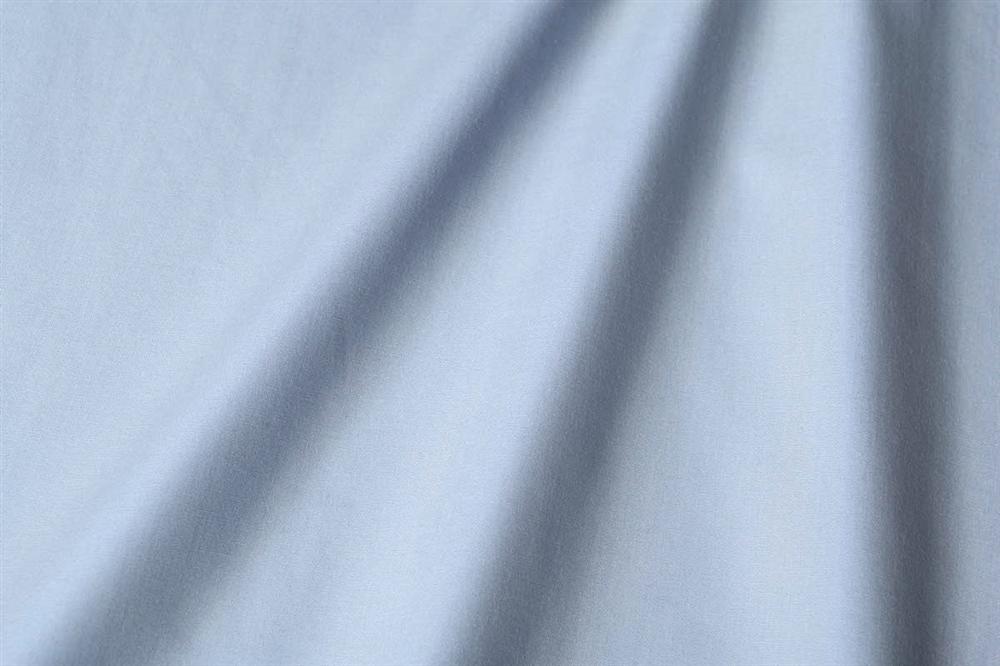Cotton Shirting - Cotton Shirt
Cotton Shirting Fabric
Inca 1 Fabric: 
Shirting Fabric
is a broad term used to refer to a variety of fabrics, where the fabric is generally tightly woven and less sheer, making them an ideal shirt weight. Shirting fabric tends to have a high thread count and is usually yarn dyed, ensuring that the pattern is woven into the fabric. Here at Bivolino, we offer a variety of cotton shirting to ensure you have quality materials available to you for crisp cotton dress shirts, blouses and more.What are the different types of cotton fabric?
Cotton fabrics can be silky or rough, smooth or textured, thick or sheer, indestructible or luxurious, making them America's favorites for both home furnishings and clothing. Versatility, softness, breathability, absorbency, performance and durability are just a few of the qualities that have earned it year-round status.
Here are some of the many types of cotton fabrics:
• Broadcloth
: A tightly woven
: A tightly woven
lustrous cotton cloth
with fine embedded crosswise ribs. Resembles poplin. Use: shirts and blouses, as well as home decorating.• Canvas: Rugged, woven cloth made with coarse yarn. Also called duck. Use: cushions, slipcovers, shower curtains, paint dropcloths.
• Chambray
: Fabric woven with a mixture of colored and white yarn. Use: curtains, shirts, dresses.
: Fabric woven with a mixture of colored and white yarn. Use: curtains, shirts, dresses.
• Chenille: A fuzzy cotton yarn or fabric that has pile protruding around it, named for the French word for caterpillar. Use: Heavyweight as upholstery; lightweight for bedspreads and robes.
• Chintz: Glazed fabric, often printed with floral designs or stripes. Use: upholstery and curtains for the English country look and romantic bedrooms.
• Corduroy: Ribbed pile fabric in various weights and weaves. Use: cushions, curtains, bedspreads, jumpers and pants.
• Damask: Patterned fabric made on a jacquard loom. Use: table linens and tea towels.
• Denim
: Rugged, durable twill, most popular in indigo blue, but also white, tan, red, black. Use: jeans, slipcovers, bedspreads, casual curtains.
: Rugged, durable twill, most popular in indigo blue, but also white, tan, red, black. Use: jeans, slipcovers, bedspreads, casual curtains.
• Flannel
:
:
Plain-weave soft cloth
with napped surface. Use: winter pajamas, nightgowns and sheets.• Gingham
: Yarn-dyed and woven usually in checks. Use: kitchen curtains and little girls' pinafores, and more recently sheets and pillowcases.
: Yarn-dyed and woven usually in checks. Use: kitchen curtains and little girls' pinafores, and more recently sheets and pillowcases.
• Jacquard
: Fabric woven on the jacquard loom, which produces elaborate, figured weaves. Use: decorative fabrics such as tapestries, brocade and damask.
: Fabric woven on the jacquard loom, which produces elaborate, figured weaves. Use: decorative fabrics such as tapestries, brocade and damask.
• Matelassé: Double-woven in different patterns on a jacquard loom to give a three-dimensional look. Use: Outer bedding and elegant tablecloths.
Oxford
: Fabric made with a modified plain or basket weave. Use: button-down shirts and more recently, sheets and pillowcases.
: Fabric made with a modified plain or basket weave. Use: button-down shirts and more recently, sheets and pillowcases.
• Percale: A smooth, finely combed woven with a minimum thread count of 180 threads per square inch. Use: sheets and shirts.
• Poplin: Fabric with a fine horizontal rib effect on the surface and high thread count. Use: high-quality shirting.
• Plissé: Fabric treated with a solution that shrinks part of the threads to create a crinkle effect. Use: blanket covers and summer pajamas.
• Sateen: A satin-weave cotton with a smooth, lustrous surface. Striped sateen mixes lustrous with matte-finish stripes. Use: sheets, tablecloths, curtains.
• Seersucker
: A lightweight cotton fabric with a woven crinkle achieved by altering tension in the warp yarns. Use: synonymous with the classic summer suit; also used in sportswear, curtains, shirts, slipcovers.
: A lightweight cotton fabric with a woven crinkle achieved by altering tension in the warp yarns. Use: synonymous with the classic summer suit; also used in sportswear, curtains, shirts, slipcovers.
• Terry cloth: Fabric with moisture-absorbing loop pile covering the entire surface on one or both sides. Use: bath towels, robes and cushion covers.
• Twill: Durable fabric with diagonal lines on its face. Use: pants, shirts, shorts, slipcovers.
• Velvet: A warp-pile fabric with short, densely woven cut pile, giving the fabric a soft, rich texture. Use: draperies, cushions and clothing.
From the men’s collection https://www.bivolino.com/en/men-shirts-business








